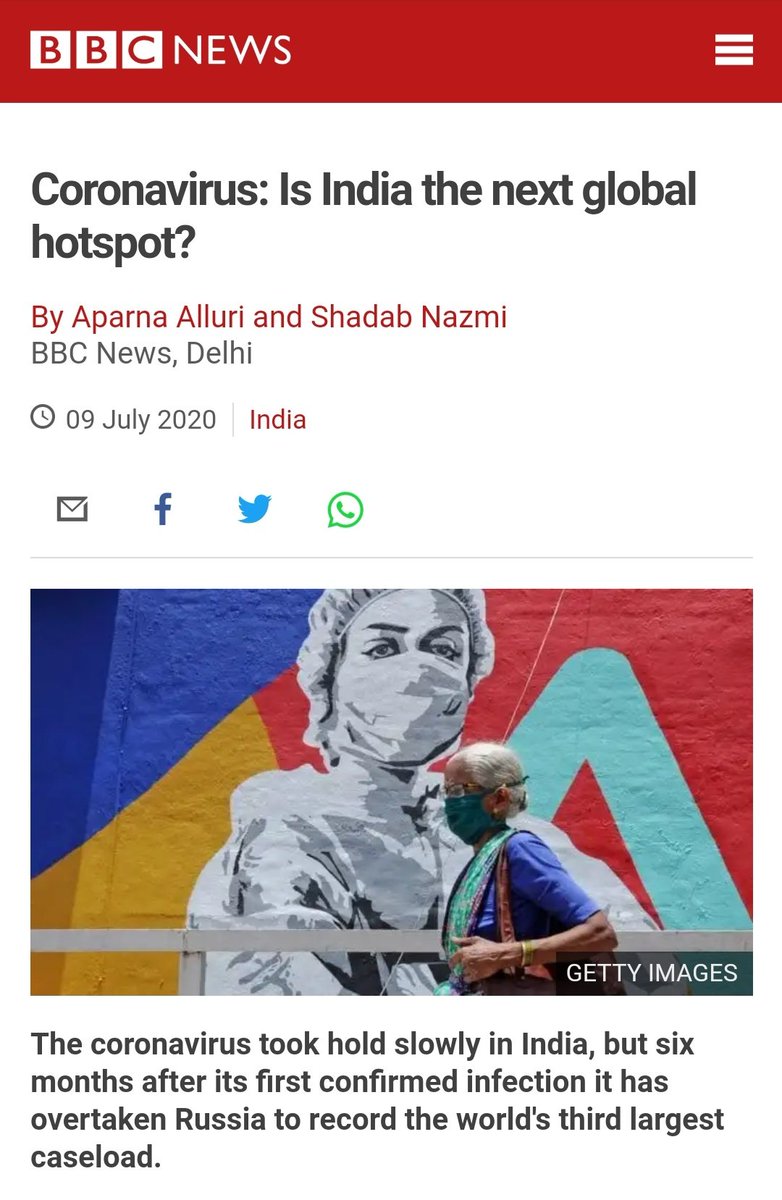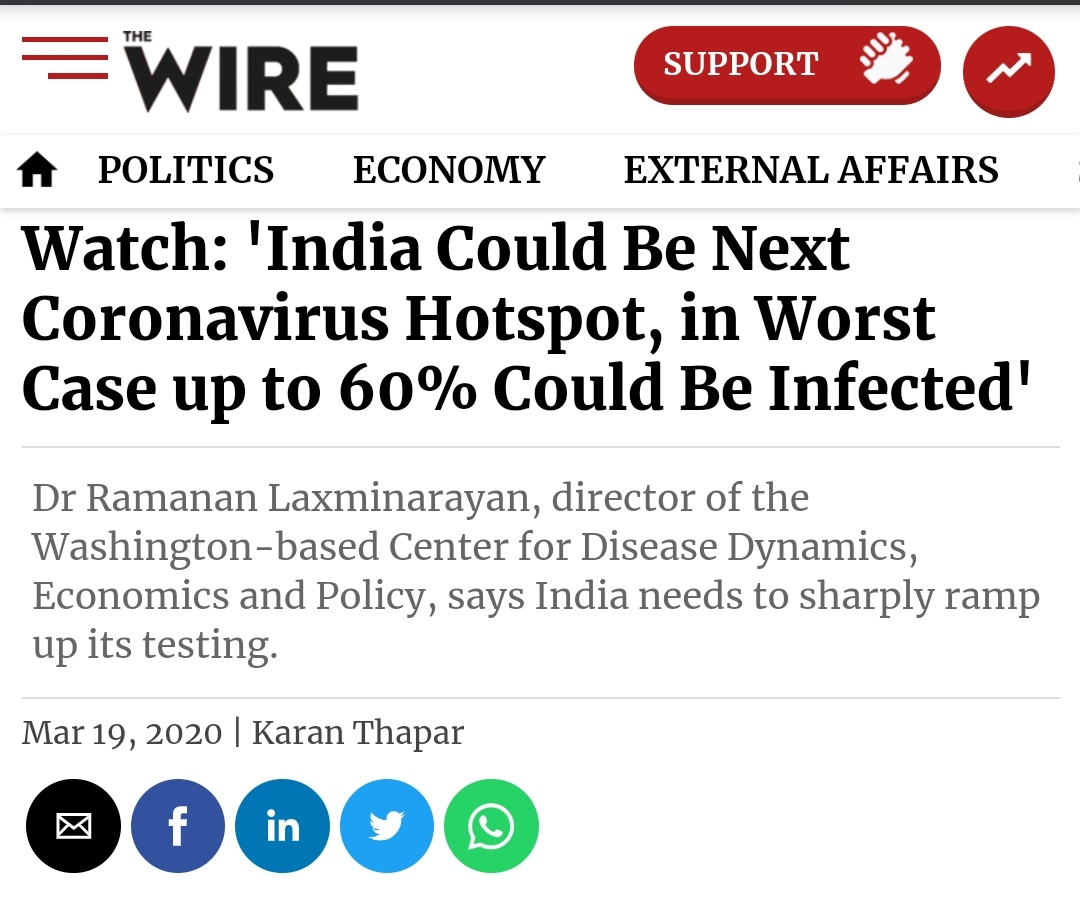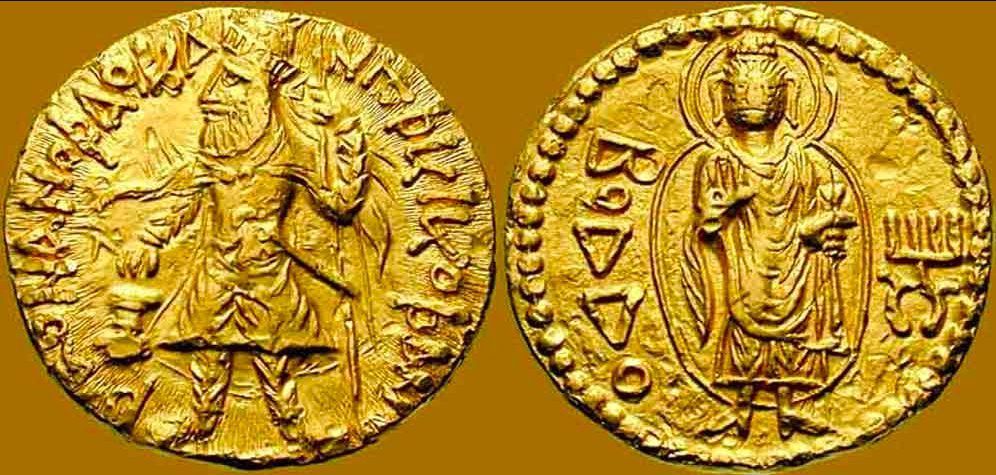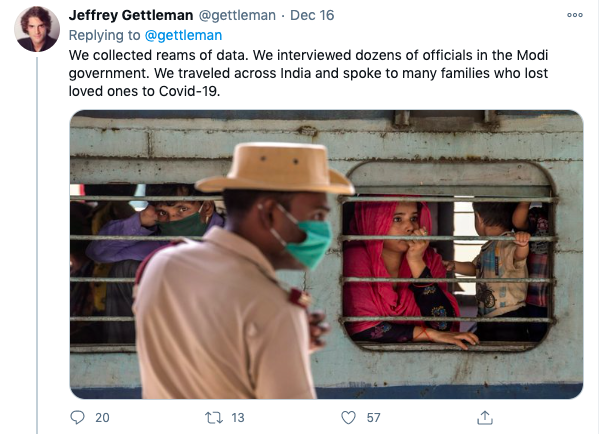
The usual suspects are back. This time with a mixture of Persian and Sanskrit culture (whatever that is). The early colonial Orientalists created the 'Aryan' race, the modern day #Whitesplainers have invented a 'Sanskrit Culture'.
Let's see what they have to say.
#Thread
Let's see what they have to say.
#Thread

'The Brits, to general relief, left'. The invaders 'effectively became Indian'. Now the problem is that Audrey, the featured author, periodically reminds us that there was no India before 1947. So how did the invaders became Indian? 



In anyway, for the invaders to become 'Indian' in 8th century India, they should have adopted the customs, language & religion of India. This is what every invader starting from the Greeks did. They truly became Indian.
Indo-Greek coin (190-180 BCE) Balaram & Vasudeva
Indo-Greek coin (190-180 BCE) Balaram & Vasudeva

The Kushan coin of Kanishka depicting Buddha. The Kushans not only adopted Buddhism, they also adopted the Bactrian language. 

The invaders did not become Indian in the true sense. They in fact brought with them their own culture, language and religion, which was imposed on India. All historical accounts of invasions mention desecration of Indian places of worship. That is not how one becomes 'Indian'.
And honestly, no one is holding the present day Muslims responsible for what happened in 7th century. But on the other hand politicians like Owaisi openly claim, 'we [Muslims] ruled India for 800 years'. So who is narrow minded? Who is denying the cosmopolitan nature of India? 



We are told Sanskrit was not a common language, but here the author imagines of an interaction of the 'Sanskrit world' with the Persian world. He probably is hinting to the mass collection of Hindu science, mathematics & medical texts that were translated into Arabic & Persian. 

We are to believe that the Gahaznavids minted coins with Hindu symbols & Sanskrit phrases. But what were the phrases? The phrase was a Sanskrit translation of the Kalima (pic 2). That is definitely not becoming Indian by any standard. 



Then the historian comes up with the most humiliating claim of the 'Persian origins' of Chhatra. Chhatra was depicted on coins of Chandragupta II in 4th C. CE, much before the Persians came invading. Thats Eaton the historian for you. 



Audrey comes in with her Sanskrit expertise. Her understanding of Ramayana is there for all of us to see. 

And of course at the end, Whitesplaining has to be reinforced. We the people of colour, rolling in our filth of confused identity need a pair of White historians to tell us who we really are. 

• • •
Missing some Tweet in this thread? You can try to
force a refresh
















